Your Guide to Recutting And Repairing Damaged Diamonds
Linguistically speaking, the term “diamond” comes from the Greek word “adámas” which means “unbreakable”. Indeed, diamond is the hardest material known to man and ranks the highest on the Mohs-scale. Yet, it still can be broken with an appropriate amount of force.
Yep. You heard me right, diamonds can get damaged despite being the hardest substance on Earth. Did you know that inclusions and poorly proportioned diamonds with extremely thin girdles or shallow crowns can heighten the risk of physical damage?
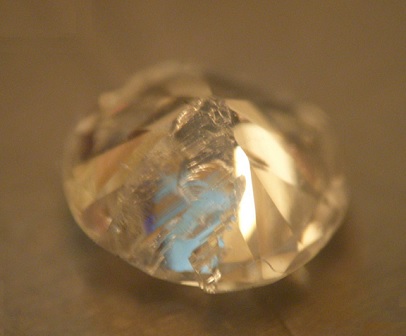
A chip that led to cleavage along the diamond’s body.
Besides that, day to day wearing of jewelry can result in wear and tear. For example, a diamond’s facet junctions can be abraded if proper care is not taken when the jewelry is worn. Likewise, the luster of the diamond can degrade over time when too many scratches accumulate on its surface.
When Does the Need for Re-Polishing Arises?
While both re-polishing and re-cutting serve similar purposes of restoring a diamond’s appearance, these 2 terms refer to different technical scopes of work. A re-polishing job is usually performed to correct minor damage like nicks, scratches and finishing. Typically, these reworks only result in minute weight loss.
On the other hand, re-cutting a diamond is usually reserved for repairing serious damages or to totally revamp the diamond’s appearance. For example, a piece of old estate diamond jewelry may be re-cut into one with a modern flavor. Recutting can also be used to remove a severe chip to prevent further damage from propagating.
Is Re-Cutting a Diamond Justifiable for Costs?
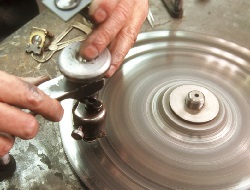
Cutter repolishing a diamond.
When a diamond is already damaged, the chance of more damage to occur increases dramatically. A damaged girdle (the outermost rim of the stone) or a chipped corner can lead to disastrous consequences if a huge blow is dealt to that weak point at a correct angle.
As soon as you notice your diamond is damaged, you should stop wearing it. I also recommend that you take it to your local jeweler or to a cutter and get it assessed before the situation deteriorates. Letting a professional address the problem during an early stage will help lay out more available options to rectify the issue.
At this point, should you decide to send your diamond for recutting, you do need to calculate costs and plan ahead. First of all, you have to understand that a cutter’s fees won’t come cheap. To get a one-carat diamond repolished, it can cost you anywhere between $200 -$300. Also, you may need to take into account additional costs like shipping and insurance fees.
Unless your stone is of high value (very good color, considerable weight etc…) or there’s sentimental significance to rescue the diamond, I recommend leaving alone. It is very likely you will end up losing some value when re-cutting a diamond. In general, re-cutting isn’t worth it for diamonds with carat weights of less than 30 points (0.30 carats).
This is because the cost of workmanship will far outweigh the value of the diamond.
Also, depending on the nature of the damage, you might lose a significant amount of weight just to rectify the problem. In such scenarios, a better solution is to mount the diamond in a protective setting (e.g bezel) and continue wearing it. You could also use the damaged diamond in other forms of jewelry (e.g. pendants) where it is less likely to be further damaged.
Remember, if the difference between the value of the new and the original stone is less than the cutting cost, it doesn’t make practical sense for a recut to happen. Next, we explore various reasons why people choose to repair damaged diamonds. Is it really worth it? Well, we think you should decide for yourself…
Related Articles
Leave A Comment

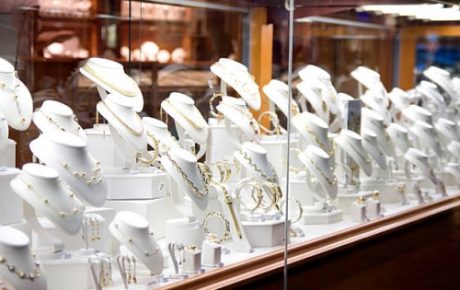
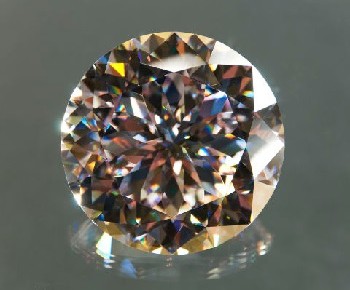

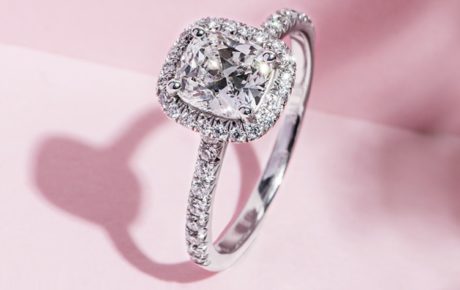









2 Comments
Question: Is it possible for an Old Mine Cut diamond to lose a color grade (lower grade) when recut to ideal proportions? Thanks.
I’m assuming you are talking about GIA certified diamonds to begin with and sending the recut diamond to GIA for another grading. The answer to your question is: No. It generally doesn’t happen unless it is a fancy colored diamond. Diamonds get graded in the face down view and GIA is pretty consistent with their color grading.